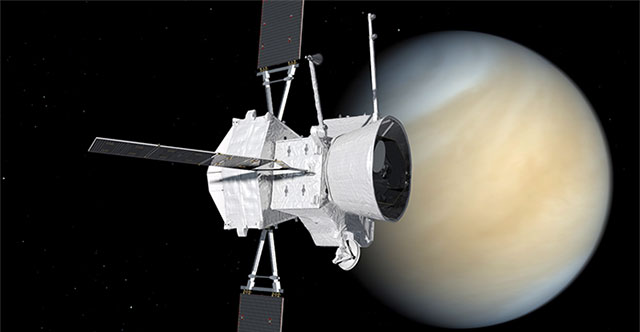
Earth's 'Twin' Planet Being Stripped of Atmosphere
Findings from the European-Japanese BepiColombo spacecraft could shed light on how an Earth-like planet became a "hellish wasteland."
During a close flyby of our nearest planetary neighbor, BepiColombo, a joint mission of the European Space Agency (ESA) and the Japan Aerospace Exploration Agency (JAXA), returned some curious data.
Led by Dr. Lina Hadid from the Laboratoire de Physique des Plasmas (LPP) of France's National Centre for Scientific Research (CNRS), the team's analysis of BepiColombo data revealed that the planet is being robbed of its upper atmosphere.
This leads to the escape of carbon and oxygen from the thin upper layers of the atmosphere into space.
According to the authors, this is the first time the loss of positively charged carbon ions has been observed at Venus.
Magnetic Field Differences
Unlike Earth, Venus does not generate its own intrinsic magnetic field in its core.
However, a weak, comet-shaped induced magnetic field is created around the planet by the interaction of charged particles streaming from the Sun, known as the solar wind, with charged particles in Venus' upper atmosphere.
Implications for Habitability
Early Venus shared many similarities with Earth, including possibly hosting significant liquid water.
However, it was this interaction with the solar wind that stripped away the water, leaving an atmosphere composed mostly of carbon dioxide with trace amounts of nitrogen and other elements.
Thus, the detected loss of carbon ions, and potentially oxygen as well, could help scientists trace the path from when an Earth-like planet in the habitable zone turned into a sweltering "hellhole."
Understanding the mechanisms that can doom an otherwise habitable planet also gives astronomers an additional tool for screening exoplanets, narrowing down the search for worlds with the best potential for supporting life.
